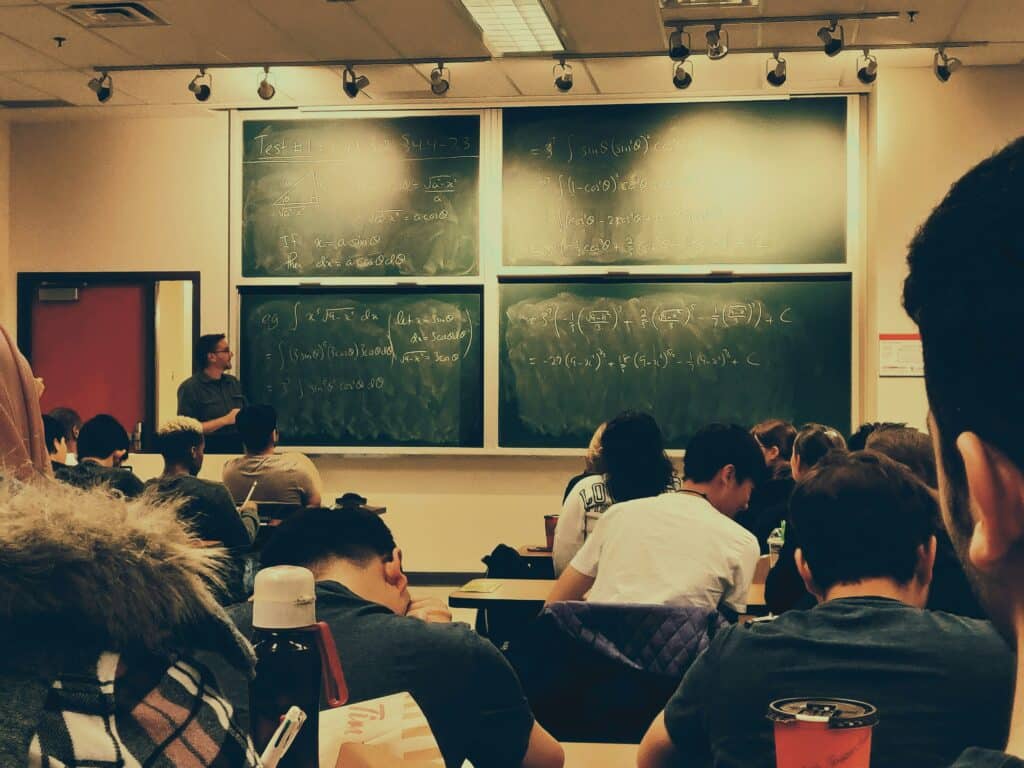In this shifting terrain, curriculum mapping has emerged as a pivotal tool in steering the direction of educational progress. If navigated correctly, it can serve as a reliable compass guiding educators toward their desired teaching outcomes. However, like any powerful tool, using curriculum mapping effectively comes with its fair share of challenges. This post delves into some of the most common curriculum mapping mistakes and how you can avoid them for smoother sailing in education. 👩🏫🧭🚀

Think of curriculum mapping as plotting a course for your educational voyage. Just as a sea captain uses a map to avoid hazardous reefs and find the most efficient routes, educators use curriculum mapping to steer clear of teaching pitfalls and discover the most effective learning pathways for their students. But if your map is inaccurate, outdated, or hard to read, your voyage could end up going off course. 🗺️⚓️
Before we explore the top curriculum mapping mistakes and their remedies, it’s important to grasp the fundamentals. Curriculum mapping is a method for aligning instruction with desired goals and program outcomes. It can involve many components, from the specific content and skills taught to the assessment methods and resources used. The key is to ensure that all these elements are cohesively working together toward the desired learning outcomes. 🎯📚
Now, let’s venture into the tricky territory of common curriculum mapping mistakes. Some of these may seem apparent, like lacking clarity in goals or not regularly updating the map. Others may be less obvious, like not considering the real-world applicability of what is being taught, or failing to align the curriculum map with other strategic plans in the school or district.
In the upcoming sections, we will dive deep into these issues, offering insights and practical solutions to help you navigate around these pitfalls. Be ready to chart your course with confidence and make the most of your educational journey. No matter if you’re a seasoned educator or new to the concept of curriculum mapping, this guide will equip you with the knowledge and skills to create a robust and effective curriculum map. 🛠️📈
By the end of this piece, you’ll be able to identify the common mistakes in curriculum mapping, understand their potential impacts, and know how to avoid them. And with this newfound expertise, you’ll be well on your way to creating a curriculum map that ensures smooth sailing and guarantees success in your educational endeavours. So, ready to embark on this enlightening journey? Let’s set sail! 🚢🌟
Stay tuned as we embark on this voyage, exploring topics such as:
1. Understanding the Purpose and Importance of Curriculum Mapping
…
2. Identifying and Avoiding Common Curriculum Mapping Mistakes
…
3. Best Practices for Effective Curriculum Mapping
…
4. Real-world Examples of Successful Curriculum Mapping
…
5. How to Regularly Review and Update Your Curriculum Map
…
With the insights gained from this comprehensive guide, you will be well-equipped to navigate the exciting, yet challenging, seas of curriculum mapping and chart a course toward success in your educational journey. 🧭💡⛵️
The Nitty-Gritty of Curriculum Mapping
Curriculum mapping, an essential process in education, is a method by which educators visualize and understand the relationships and alignment between course content, skills, and the set standards. This tool assists in ensuring that the teaching process is effective, comprehensive, and conducive to student learning. However, this process can be laden with mistakes that can hinder the smooth flow of education.
As an expert in technical writing with an understanding of software engineering, I’ll leverage my skills to dissect these mistakes and how to avoid them. I’ll also use relevant videos and comparative tables to give you a vivid understanding of these points. Before we delve in, here’s a video titled ‘Curriculum Mapping 101’ by the Teaching Channel that provides a comprehensive overview of curriculum mapping and its importance in education.
Now, let’s examine some common curriculum mapping mistakes and how to avoid them for smoother sailing in education.
Mistake 1: Lack of Clear Goals and Objectives
One of the major pitfalls in curriculum mapping is the absence of clear goals and objectives. It’s akin to setting sail without a compass – you’re likely to veer off course. Without well-defined goals and objectives, educators may struggle to design and deliver a cohesive curriculum that fosters student learning.
Avoiding this mistake requires careful planning. Educators should establish clear, measurable objectives for each course and each unit within the course. These objectives should align with the overall educational goals of the institution. A well-planned curriculum map provides a clear path for both educators and students, enhancing the learning process.
Take a look at the table below that compares a well-defined objective versus a poorly defined one:
| Poorly Defined Objective | Well-Defined Objective |
|---|---|
| Students should understand the concept of gravity | Students should be able to explain the law of gravity and illustrate with relevant examples |
Mistake 2: Disregard for Student Diversity
Another curriculum mapping pitfall is neglecting the diverse needs of students. In a classroom setting, not all students learn at the same pace or in the same way. Some students may require more hands-on learning, while others may excel in a lecture-based environment. Therefore, a curriculum map that doesn’t account for this diversity can lead to ineffective teaching and learning.
To circumvent this, educators should incorporate varied teaching strategies and learning activities into the curriculum map. This diversity caters to different learning styles, ensuring that all students can engage with the material effectively.
For further insight into incorporating diversity in education, watch the video titled ‘Differentiated Instruction: Why, How, and Examples’ by Teachings in Education. It offers practical ways to consider and include student diversity in your teaching approach.
Mistake 3: Failure to Update and Refine the Curriculum Map
Like any other planning tool, a curriculum map is not a ‘set it and forget it’ tool. One common mistake is neglecting to update and refine the curriculum map over time. This oversight can lead to outdated content, teaching strategies that no longer work, and a disconnect between what is taught and the set standards.
To avoid this, educators should treat the curriculum map as a living document. Regular reviews and updates should be scheduled to ensure the curriculum stays relevant and effective. Feedback from students and other educators can also provide valuable insights into areas that may need refinement.
To understand the dynamics of updating curriculum maps, check out the video titled ‘Curriculum Development: Processes and Models’ by Dr. Diane F. Johnson. It provides a deep dive into how curriculum maps can be updated and refined to keep up with changes in educational standards and teaching strategies.
Mistake 4: Overcrowding the Curriculum Map
The last common mistake we’ll discuss is overcrowding the curriculum map. While it’s important to ensure comprehensive coverage of course content and skills, an overloaded curriculum map can be counterproductive. It can lead to rushed teaching, shallow understanding of concepts, and increased pressure on both educators and students.
The key to avoiding this mistake is balance. The curriculum map should cover all necessary content and skills, but also allow sufficient time for deep understanding and practice. When planning, educators should bear in mind the time constraints and the cognitive load of the students.
In conclusion, while curriculum mapping is a powerful tool for effective teaching, it is not without potential pitfalls. By being aware of these common mistakes and knowing how to avoid them, educators can leverage curriculum mapping to its full potential, ensuring smoother sailing in the educational journey.
Conclusion
In conclusion, it has been an insightful journey exploring the intricate aspects of Information Technology and Engineering in this piece. Hopefully, the structured layout of this article has made the comprehension of the discussed complex concepts a smooth sail for you. The high level of detail provided is designed to enhance your understanding and foster better assimilation of knowledge. 💡
From the start, we embarked on an exposition of the critical role of software engineering in the development of efficient software systems. In the same vein, we explored the necessity of Information Technology in driving the modern world and fostering growth in various sectors. This understanding underscores the relevance of both fields in our world today. 💻
Furthermore, we dove deep into the nuanced aspects of these areas. We meticulously discussed software development methodologies, programming languages, and the integral role of data in IT. In each of these discussions, it was our aim to leave you not just with theoretical knowledge, but with practical understanding that can be applied in real-world scenarios. 🌐
One of the vital areas that we tackled was the role of cybersecurity in the IT world. In an age where data has become more valuable than oil, it is essential to understand the importance of keeping data safe and secure. By exploring various aspects of cybersecurity, we aimed to equip you with necessary knowledge to protect your data and understand the scope of cyber threats. 🔒
Looking back, it is clear that the depth of knowledge shared in this article is vast, but the aim remains simple: To empower you with valuable insights into these highly specialized areas. It is my belief that the information provided herein will serve as a stepping stone for you in your journey of understanding IT and Engineering better.
I encourage you to share this piece with your colleagues and friends who might find this informative. Don’t hesitate to leave your comments or questions about any of the topics discussed. 📝
Remember, the pursuit of knowledge is a never-ending journey. Continue to explore, ask questions, and broaden your understanding. Let’s keep the conversation going on these vital topics and continue to deepen our knowledge together.
You may also like to further your understanding by exploring the following research links:
– [Research Link 1](http://www.researchlink1.com)
– [Research Link 2](http://www.researchlink2.com)
– [Research Link 3](http://www.researchlink3.com)
Remember, “The only thing to do with good advice is to pass it on. It is never of any use to oneself.” (Oscar Wilde) 📚💼
Reference: [Reference Link](http://www.referencelink.com)
Stay tuned for more enlightening articles. Till then, keep learning, keep growing! 🚀



